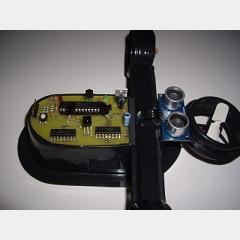Categories
- animatronics (12)
- apple (11)
- arduino (179)
- art (41)
- articles (121)
- artificial intelligence (11)
- automation (421)
- avr (205)
- bitcoin (3)
- breadboard (9)
- cameras (57)
- cars (26)
- cell phones (28)
- clothing mods (21)
- console mods (26)
- dangerous (94)
- desktop mods (24)
- embedded (5)
- flying things (54)
- fpga (22)
- gaming creations (108)
- interface (225)
- internet (17)
- laptop mods (6)
- lasers (22)
- linux (7)
- magnetic (3)
- medical (12)
- microcontrollers (51)
- misc projects (152)
- msp (12)
- music (124)
- pic (90)
- projects (23)
- pyroedu (76)
- raspberry pi (26)
- robots (312)
- security (36)
- sensors (307)
- software (200)
- solar (19)
- stamp (9)
- tools (149)
- tutorials (98)
- Uncategorized (45)
- usb (44)
- wireless (256)
Sponsors


Posted March 7, 2012 by Chris
“A PongSat is an experiment that fits inside of a ping pong ball. These ping pong ball ‘satellites’ are flown to the edge of space by balloon or launched in sounding rockets. The PongSats are then returned to the student. It’s an easy and inexpensive way to get students excited about science and engineering. There are endless possibilities for experiments that can fit inside a ping pong ball. PongSat’s can be as simple or complex as you want them to be.”

Posted February 21, 2012 by Chris
“I decided to build an autonomous flying robot about three years ago. I’ve converted RC cars to autonomous operation, so I thought that an RC helicopter might be a good place to start. I quickly discovered that the standard helicopter design would probably be too unstable in flight for my simple navigational and programming skills – but in searching the web I stumbled across the four rotor electric helicopter platform…and I was hooked!”

Posted January 13, 2012 by Chris
“AeroQuad hardware typically consists of an Arduino MCU as the flight controller board and an AeroQuad shield with various sensors, such as an accelerometer and gyroscope. AeroQuad software is written in C and uploaded to the MCU via the Arduino IDE. It currently supports an Acrobatic Mode that uses only the gyroscope for flight assistance, and a Stable Mode that uses the gyroscope and accelero-meter for leveled flight assist.”

Posted December 20, 2011 by Chris
“In previous and parallel work with autonomous airships we gained experience with UAV control and autonomous navigation. Compared to airships, the multirotor UAVs we use in one of our current projects are of course much smaller and can carry much less payload. On the other hand, due to their size, they can be deployed a lot faster and do not require any preparation except for connecting the batteries.”

Posted December 6, 2011 by Chris
“The electronics setup consists of an ETT STM32 stamp module which runs custom flight software written in C. The board contains an ARM Cortex M3 microcontroller with 64K of RAM and 512K of flash rom. The board itself runs at 3.3V, but the inputs are 5V tolerant.”

Posted November 19, 2011 by Chris
If you are looking to make some autonomously controlled flying objects, a blimp is steady and slow way to get started. This article shows you how one team modified a toy blimp’s electronics to add some intelligence and autonomy to its flight.

Posted November 4, 2011 by Chris
“The Quad Rotor Helicopter is a semi autonomous robot. It flies with 4 rotors arranged in a + sign configuration. The Quad Rotor is a work in progress. The Quad rotor takes sensory input into an FPGA. The FPGA filters the input and runs a PID controller to control the speed of each propeller. The FPGA offers all of the sensor data to a cpu and the cpu makes decisions about the orientation.”

Posted October 11, 2011 by Chris
This guy took the spinning POV idea one step further and added them to his helicopter’s rotor. There’s good control over the display as you can see in the few videos he has posted. The article has the source files of the software and hardware used to build the project, so take a look and build your own!

Posted October 7, 2011 by Chris
“September 2009, Quattrino’s project started as our Mechatronics Engineering graduation project in the German-Jordanian University. Quattrino or Quadrotor (which is the common name for it) is an aircraft classified as rotorcraft, lifted by four rotors and able to vertical take-off & landing (VTOL).” The project article has all the hardware, electrical and software details so go build your own!

Posted August 12, 2011 by Chris
This ATmega based rocket launching design functions as a controller for synchronous delayed triggering for launching model rockets or fireworks, whatever your passion. The article has all the details of how this project works and a video demonstrating it in action.






